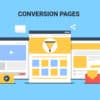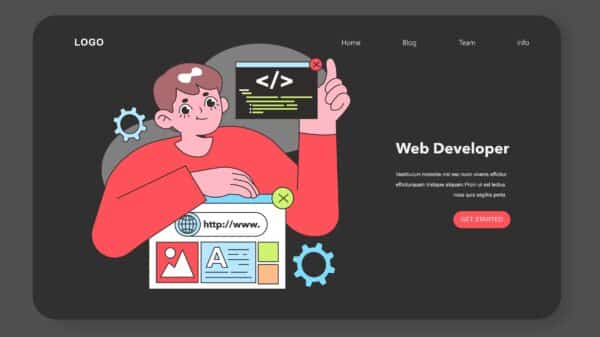Retargeting leverages the concept that not every visitor who encounters your brand or product will convert on their initial visit. By re-engaging users who have previously interacted with your site or ads, retargeting helps bridge the gap between initial interest and final conversion.
This strategy is not just about keeping your brand top-of-mind but about strategically guiding potential customers through the sales funnel with personalized and timely reminders.
The following retargeting strategies will help you enhance your campaign performance, increase conversion rates, and ultimately, achieve a higher return on investment (ROI).
1. Understand Your Audience Segmentation
Effective retargeting begins with a deep understanding of your audience and their behaviors. Audience segmentation involves dividing your broader audience into distinct groups based on specific criteria or actions they have taken.
To start, analyze your website and campaign data to identify key segments of your audience:
- Website Visitors: Users who have visited your website but did not complete a desired action, such as making a purchase or filling out a form. This group can be further segmented based on their behavior, such as pages visited or time spent on your site.
- Cart Abandoners: Users who added products to their shopping cart but left before completing the purchase. This segment is particularly valuable because they have shown a strong intent to buy.
- Content Engagers: Visitors who have interacted with specific content on your site, such as blog posts or product descriptions, but have not yet converted. This group indicates interest in your content or offerings.
- Past Customers: Individuals who have made a purchase in the past. This segment can be targeted with offers for repeat purchases, cross-sells, or upsells.
- High-Value Leads: Users who have engaged significantly with your brand or have high potential value. This could include those who have filled out detailed forms or signed up for premium content.
Once you’ve identified your audience segments, create customized ad content that speaks directly to each group’s unique needs and behaviors:
- Website Visitors: Consider ads that remind them of their initial interest, highlight benefits, or offer a special incentive to return and complete their desired action.
- Cart Abandoners: Use dynamic ads that display the exact products they abandoned. Include compelling offers, such as discounts or free shipping, to encourage them to finalize their purchase.
- Content Engagers: Show ads related to the content they engaged with. For example, if they read a blog post about a specific topic, you could promote additional content or products related to that topic.
- Past Customers: Tailor your ads to offer value to these users, such as loyalty rewards, exclusive promotions, or new product releases that complement their previous purchases.
- High-Value Leads: Use personalized and targeted ads that acknowledge their high engagement level. Offer premium services, advanced features, or exclusive deals that cater to their potential value.
Tools such as Google Analytics, Facebook Ads Manager, and CRM systems provide useful information about user behavior, preferences, and interactions with your brand. Use this data to refine your segments and improve your targeting strategies.
2. Create Personalized Ad Content
Personalized ads are more engaging and relevant, increasing the likelihood of conversions. Here’s how to develop and implement personalized ad content effectively:
Leverage Dynamic Ads

- Product Recommendations: Show ads featuring the exact products users viewed or added to their cart but did not purchase. For example, if a user browsed a particular pair of shoes but didn’t buy them, a dynamic ad can display those shoes along with similar products or accessories.
- Customized Messaging: Tailor the ad copy to reflect the user’s previous interactions. If a user visited a specific category on your site, your ad can highlight that category or offer related promotions.
Address Cart Abandonment
Cart abandonment is a critical area where personalized ad content can make a significant impact:
- Reminder Ads: Create ads that remind users of the items they left behind in their shopping cart. Include images of the abandoned products and compelling calls-to-action (CTAs) to encourage users to return and complete their purchase.
- Special Offers: Enhance these reminders with special incentives such as discounts or free shipping to persuade users to finalize their transactions. For example, “Complete your purchase now and get 10% off” can be an effective motivator.
Make Use of Behavioral Data
Behavioral data provides insights into user interests and preferences, which you can use to craft personalized ad content:
- Interest-Based Ads: If a user has shown interest in specific topics or products, create ads that highlight relevant content or offers. For instance, if a user frequently reads blog posts about a certain topic, promote related products or services in your ads.
- Engagement-Based Ads: For users who have engaged with certain content or features on your site, design ads that showcase similar or complementary items. This can keep them engaged with your brand and drive further interactions.
Personalize Based on Demographics
Incorporate demographic information into your ad content to make it even more relevant:
- Location-Based Ads: Customize ads to reflect the user’s location, such as local promotions or events. For example, if a user is in New York, you could show ads for a local store or event.
- Age and Gender: Tailor your messaging based on demographic data to ensure it resonates with the user’s profile. For instance, if your product appeals to a specific age group or gender, adjust the ad content to reflect this.
Use Personalized Landing Pages
When users click on a personalized ad, direct them to a landing page that matches the ad content:
- Consistent Messaging: Ensure the landing page content aligns with the ad they clicked on. If the ad featured a specific product, the landing page should prominently display that product with a seamless transition from the ad.
- Relevant Offers: Include relevant offers or promotions on the landing page that match the user’s interests or previous interactions. This maintains continuity and enhances the chance of conversion.
3. Optimize Frequency and Timing
Balancing the frequency and timing of your retargeting ads is crucial. Too many ads can lead to ad fatigue, while too few may not be effective. Implement the following strategies:
- Frequency Capping: Limit the number of times an individual sees your ad to prevent annoyance and ad blindness.
- Ad Scheduling: Analyze the best times to show your ads based on user behavior and adjust your ad schedule accordingly.
Finding the right balance ensures that your ads remain effective without overwhelming your audience.
4. Use Sequential Retargeting
Sequential retargeting is a strategic approach to guiding users through a structured journey with a series of targeted ads that build on their previous interactions with your brand. Unlike traditional retargeting, which may serve the same ad repeatedly, sequential retargeting aims to deliver a sequence of messages that gradually move users closer to conversion.
Map Out the Customer Journey
Before implementing sequential retargeting, map out the typical customer journey for your target audience. This involves understanding the stages a user goes through, from initial awareness to final conversion. Key stages often include:
- Awareness: Users are first introduced to your brand or product.
- Consideration: Users evaluate your offerings and compare them to alternatives.
- Decision: Users are ready to make a purchase or take a specific action.
By identifying these stages, you can create a targeted sequence of ads that aligns with where users are in their journey.
Design a Sequential Ad Campaign
Create a series of ads that progressively guide users through the stages of the customer journey:
- Initial Ad: Start with a broad, introductory ad that raises awareness of your brand or product. This ad should capture attention and spark interest, encouraging users to learn more about what you offer.
- Follow-Up Ad: Once users have engaged with your initial ad, present follow-up ads that provide more detailed information. This could include product benefits, features, or comparisons. The goal is to nurture users and deepen their interest.
- Conversion Ad: Finally, serve ads that focus on conversion. These ads should include strong calls-to-action (CTAs), special offers, or incentives designed to prompt users to complete their purchase or desired action.
5. Leverage Cross-Channel Retargeting
Users interact with your brand across various platforms. To maximize the impact of your retargeting efforts, implement cross-channel strategies:
- Social Media Retargeting: Use platforms like Facebook and Instagram to retarget users who visited your website but did not convert.
- Search and Display Network Retargeting: Target users across Google’s search and display networks to reinforce your message and increase visibility.
Consistent messaging across multiple channels enhances brand recall and drives conversions.
6. Integrate Retargeting with Email Campaigns
Combine retargeting with email marketing to reach users who have previously interacted with your brand. For instance:
- Abandoned Cart Emails: Send follow-up emails to users who abandoned their cart, including a retargeting ad for added reinforcement.
- Re-engagement Emails: Target past customers with special offers or new product announcements to encourage repeat purchases.
This integrated approach leverages multiple touchpoints to boost engagement and conversions.
You should regularly review the performance of your retargeting campaigns to ensure they are delivering the desired results.
















